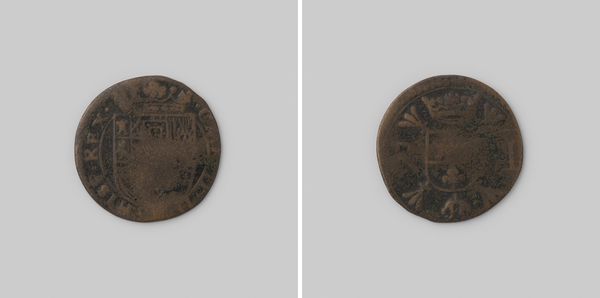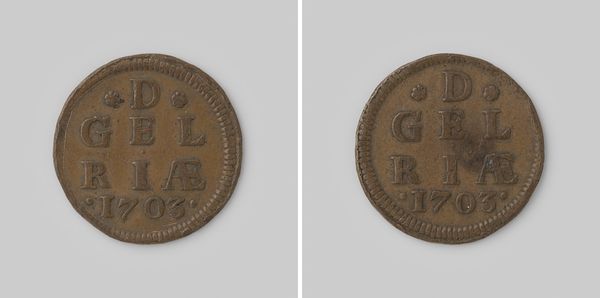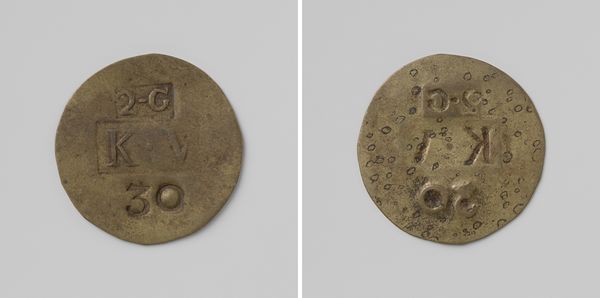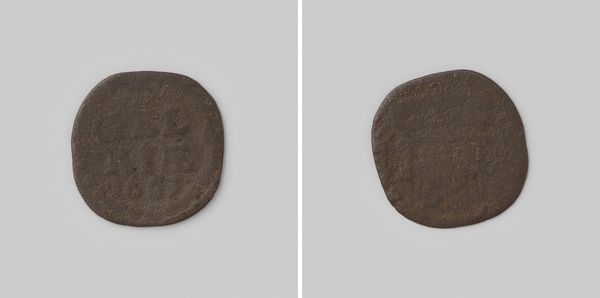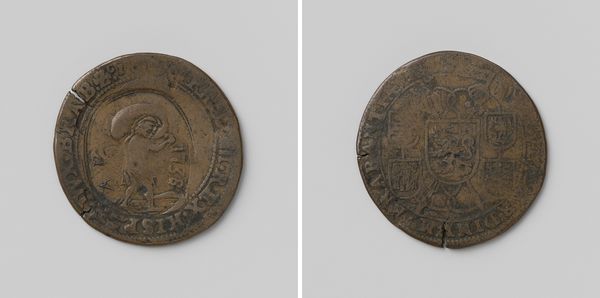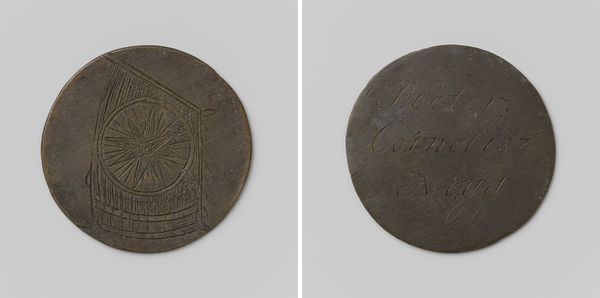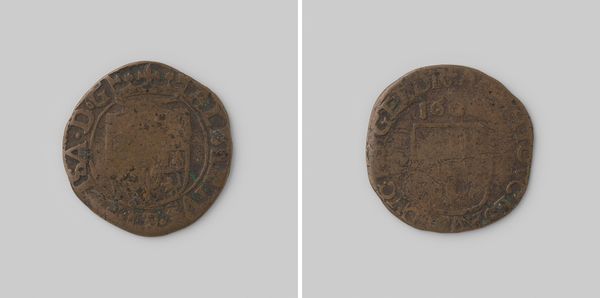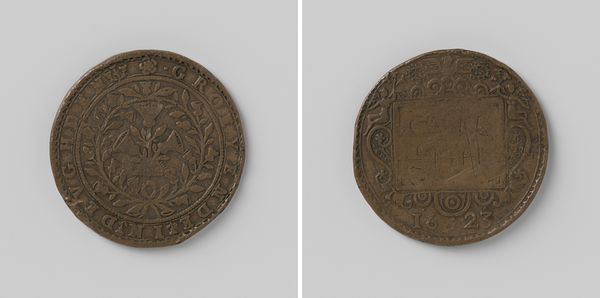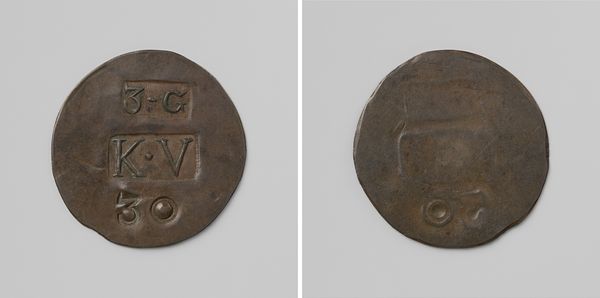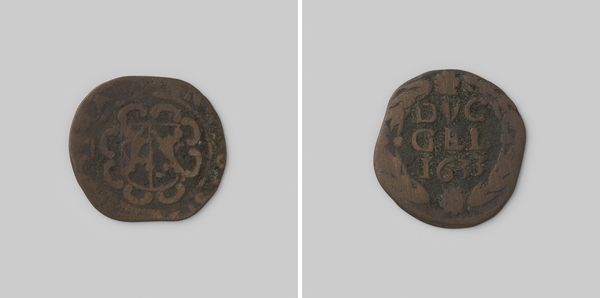
print, metal, relief, engraving
#
medieval
#
dutch-golden-age
# print
#
metal
#
relief
#
appropriation
#
engraving
Dimensions: diameter 2.1 cm, weight 27 gr
Copyright: Rijks Museum: Open Domain
Editor: This is the 'Catharina-gasthuis van Leiden, armenpenning ter waarde van een oord,' created in 1573 by an anonymous artist. It seems to be a small, metal token. What strikes me is the starkness and the rough texture of the metal; it feels very utilitarian. What do you see in this piece, considering its purpose and materials? Curator: I see a direct reflection of the economic realities of the time. It is more than just an object. The choice of base metal, the roughly engraved design - all point to the economic constraints within which these almshouses operated. How was labor divided, do you imagine, to produce these tokens en masse, while still maintaining control over the charitable disbursements? Editor: So you're saying the material itself and how it was produced tells us a lot about the social structure. Do you think the simplicity of the design might also be intentional, to prevent counterfeiting or maybe to further emphasize its humble purpose? Curator: Absolutely. Consider the skill level required for its production versus the labor. Where does the value lie, and for whom? Also, imagine the recipient's perspective: receiving this token represents not only assistance but perhaps also societal obligation, and a stark reminder of their dependence within this economic structure. This little metal object becomes a weighty symbol. Editor: It's amazing how much a small piece of metal can reveal about labor, resources, and even social hierarchy. Thanks! Curator: Indeed. Looking at it through this lens allows us to connect the materiality of the artwork to the bigger picture of 16th-century Dutch society. It changes how we perceive and value these seemingly insignificant items.
Comments
No comments
Be the first to comment and join the conversation on the ultimate creative platform.

